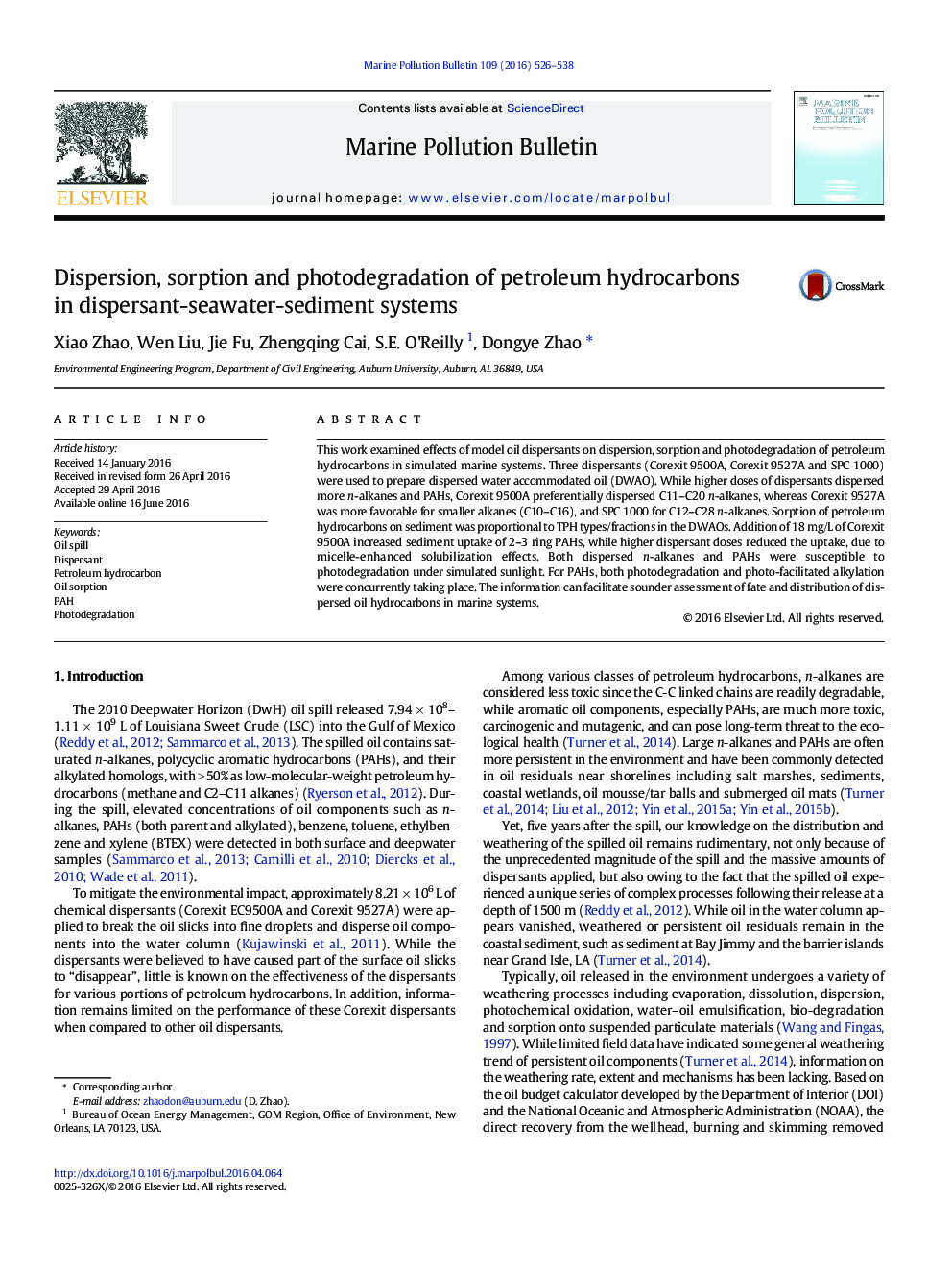| Article ID | Journal | Published Year | Pages | File Type |
|---|---|---|---|---|
| 4476432 | Marine Pollution Bulletin | 2016 | 13 Pages |
•Dispersants preferentially disperse different fractions of petroleum hydrocarbons•Dispersant SPC 1000 is much more effective than Corexit 9500A and Corexit 9527A•Sediment adsorbs dispersed alkanes and PAHs in accord with the dispersion preference•Lower doses of dispersant enhance sorption of PAHs, higher doses favor dissolution•Dispersed n-alkanes and PAHs are susceptible to photodegradation under solar light
This work examined effects of model oil dispersants on dispersion, sorption and photodegradation of petroleum hydrocarbons in simulated marine systems. Three dispersants (Corexit 9500A, Corexit 9527A and SPC 1000) were used to prepare dispersed water accommodated oil (DWAO). While higher doses of dispersants dispersed more n-alkanes and PAHs, Corexit 9500A preferentially dispersed C11–C20 n-alkanes, whereas Corexit 9527A was more favorable for smaller alkanes (C10–C16), and SPC 1000 for C12–C28 n-alkanes. Sorption of petroleum hydrocarbons on sediment was proportional to TPH types/fractions in the DWAOs. Addition of 18 mg/L of Corexit 9500A increased sediment uptake of 2–3 ring PAHs, while higher dispersant doses reduced the uptake, due to micelle-enhanced solubilization effects. Both dispersed n-alkanes and PAHs were susceptible to photodegradation under simulated sunlight. For PAHs, both photodegradation and photo-facilitated alkylation were concurrently taking place. The information can facilitate sounder assessment of fate and distribution of dispersed oil hydrocarbons in marine systems.
